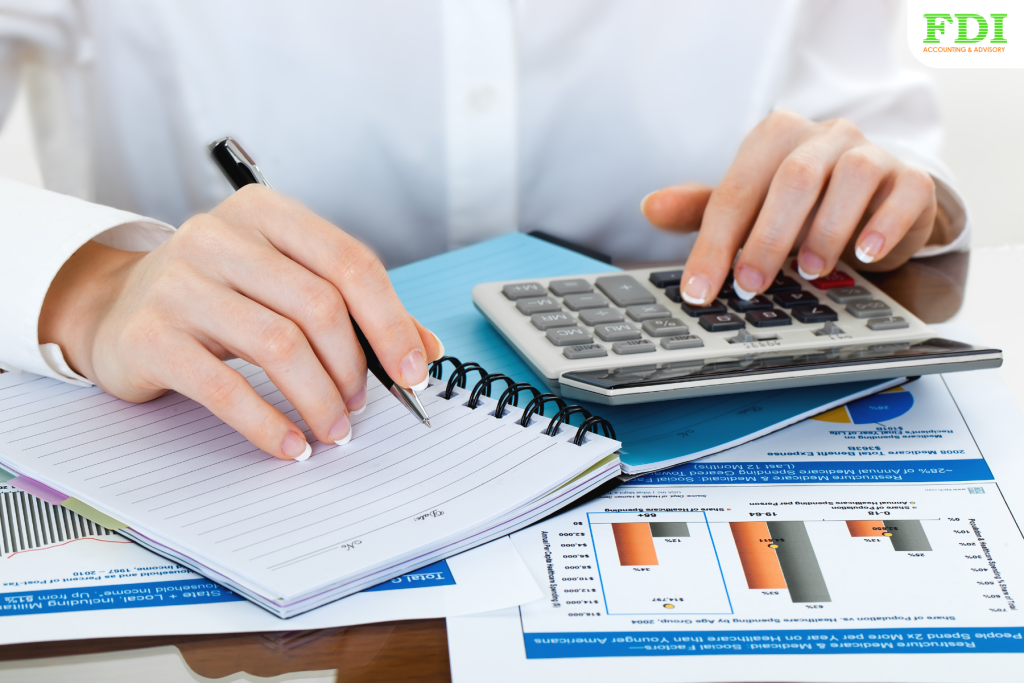Want to Understand aStatement of Financial Positionin Just 10 Minutes? Here Are the Key Points to Watch For!
Update! Following the latest announcement from the Department of Business Development, certain items have been shortened — one of them being the renaming of the 'Statement of Financial Position' to 'Financial Position Statement'. This change aligns with the current financial reporting standards adopted by the professional bodies and ensures consistency with the English terminology.
Statement of Financial Position
A Statement of Financial Position, commonly known as a Balance Sheet, is a financial report that shows 'what your business owns and owes' on a specific date for example, at year-end or the end of a quarter. This statement presents three main sections
- Assets: What the company owns. This includes items such as cash and buildings
- Liabilities: What the company owes. This includes items such as loans or other unpaid expenses
- Equity: The owners’ or shareholders’ investment in the company, representing what remains after liabilities are deducted from assets — showing how much is left
This statement is like a 'financial snapshot' of the business, which owners, investors, and banks can use to assess the company’s stability.
Purpose of the Statement of Financial Position
The purpose of the Statement of Financial Position is to provide an overview of a company’s assets, liabilities, and equity at a specific point in time. It is used to analyze liquidity, financial stability, and financial planning, based on the accounting information presented.
What Is the Purpose of a Statement of Financial Position?
1. To show the company’s financial position at a specific point in time.
- This statement presents information as of the end of the accounting period, for example, 31 December 2024.
- This statement shows what assets the company has on that specific date.
It also shows to what extent these assets were financed by liabilities and owners’ equity.
2. To analyze the company’s financial stability.
- For investors, trade creditors, or management, this statement provides information
- to determine whether the company can meet its short-term obligations (for example, by analyzing the Current Ratio)
- and whether the debt-to-equity ratio is at a risky level. Such analysis helps in assessing and reducing operational risks.
3. To use accounting information for planning and making business decisions.
- Management and other stakeholders can use this information for investment planning, resource allocation decisions, operational strategies, and analyzing the company’s capital structure, among other purposes.
Essential Points Not to Be Overlooked.
Which Key Areas Should You Look At in a Statement of Financial Position?
Assets: Divided into two main categories.
- Current Assets:Examples include cash, trade receivables, and inventory.
- Non-current Assets :Examples include land, buildings, machinery, and patents.
Key Considerations:
- Ability to convert into cash quickly.
- Proportion of current assets to total assets (liquidity).
2.Liabilities: Liabilities are divided into the followingcategories.
- Current Liabilities: Examples include trade payables and bank loans due within one year.
- Non-current Liabilities: Examples include long-term loans and bonds.
Key Considerations:
- Ability to meet short-term obligations.
- Debt-to-total-assets ratio or debt-to-equity ratio.
3.Equity (Owners’ Equity)
Comprises:
- Registered capital / Paid-up capital.
- Retained earnings / Accumulated losses.
- Other components, such as share premium.
Key Considerations:
- Long-term growth of equity.
- Retained earnings that reflect the company’s accumulated performance.
Basic Methods for Analyzing a Statement of Financial Position
Basic Balance Sheet Analysis is an important step that helps business owners, investors, and management easily understand the ‘financial health’ of a company. Here are some simple yet effective tips for analyzing a balance sheet that you can start using right away.

1. Analyze the overall financial stability of the business.
Start by reviewing the overall picture of the financial statements—how much the business holds in assets, how much it owes in liabilities, and whether its equity is high or low. If assets exceed liabilities by a reasonable proportion, it indicates financial stability.
If liabilities are found to be greater than assets, it may indicate that the business is at risk of incurring losses or depleting its capital.
2.Examine the Liquidity Ratio.
Current Ratio
Formula: Current Assets ÷ Current Liabilities
Recommended standard value.
- A ratio greater than 1.5 indicates good liquidity, while a ratio below 1.0 suggests that the businessmay be at risk of lacking sufficient cash to meet short-term obligations."
Example: If
current assets are 800,000 baht
and current liabilities are 400,000 baht,
the Current Ratio would be 2.0 which is considered good."
3. Analyze the capital structure using the D/E Ratio (Debt to Equity).
Formula: Total Liabilities ÷ Equity
The appropriate value can be observed from:
- A D/E ratio below 1.0 indicates that the business has a strong capital base.
- A D/E ratio above 2.0 indicates excessive debt, which may lead to long-term losses.
Example: Capital Structure Analysis Using the D/E Ratio
Total liabilities = 2,000,000 baht
Equity = 1,000,000 baht
D/E = 2.0 → Caution should be taken regarding interest burden.
4.The ratio of fixed assets to equity.
Check whether fixed assets, such as buildings and machinery, are primarily financed by equity or debt. If fixed assets are high but equity is low, it may indicate long-term investments financed through debt — which carries high risk.
5. Compare with the previous period or with similar businesses in the same industry.
- To see whether assets have increased.
- To check whether liabilities are increasing too quickly.
- To see whether owners’ equity is continuing to grow or is shrinking.
Comparing with the previous period or with similar businesses helps reveal the strengths and weaknesses of the company more clearly.
Tips and Cautions
When reviewing financial statements, you should not rely solely on the Statement of Financial Position, as it does not clearly show profit or loss. It should be reviewed together with the Income Statement and the Cash Flow Statement for a more comprehensive business analysis. Standard ratio benchmarks used in financial analysis may vary by industry, so it is advisable to compare them with the financial statements of similar companies in the same sector.
"FDI Professional Consultantsin Corporate Accounting and Tax Planning"
We are committed to supporting your business toward a sustainable future with long-term accounting and tax planning consultancy services. Our team of experts possesses extensive experience and deep knowledge to help you achieve your goals for a sustainable business.
We provide advice, prepare documents, file tax returns, and coordinate with the Revenue Department, enabling your company to operate efficiently while minimizing tax-related concerns. Additionally, we offer guidance and consultation on long-term business planning to ensure stable and sustainable growth for your business.
Contact Us
- Facebook : FDI Group – Business Consulting
- @fdigroup
- Phone : 02-642-6866, 02-642-6869, 02-642-6895
- E-mail : infojob@fdi.co.th
- Website : www.fdi.co.th
BlogArticles
หลังจดทะเบียนบริษัทแล้ว เจ้าของธุรกิจจะต้องทำบัญชี – ภาษีอย่างไร ?
ทำไมผู้ประกอบการ เจ้าของธุรกิจต้องทำบัญชีบริษัทและยื่นภาษี ไม่ทำได้หรือไม่...
Read Moreรู้หรือไม่ ? การพัฒนาอย่างสมดุลตามกรอบ SDGs ในไทยพัฒนาไปถึงไหนแล้ว
SDGs ไทย กับแนวทางขับเคลื่อนโลกที่ไม่ทิ้งใครไว้ข้างหลังสู่การพัฒนาอย่างยั่งยืน ...
Read MoreSMEs must know: Set up an efficient accounting system How to start so that your business grows quickly and sustainably.
ระบบบัญชีที่ดี คือหัวใจของธุรกิจที่ยั่งยืน พร้อมคำแนะนำจากผู้เชี่ยวชาญด้านบัญชีและภาษี ...
Read More



